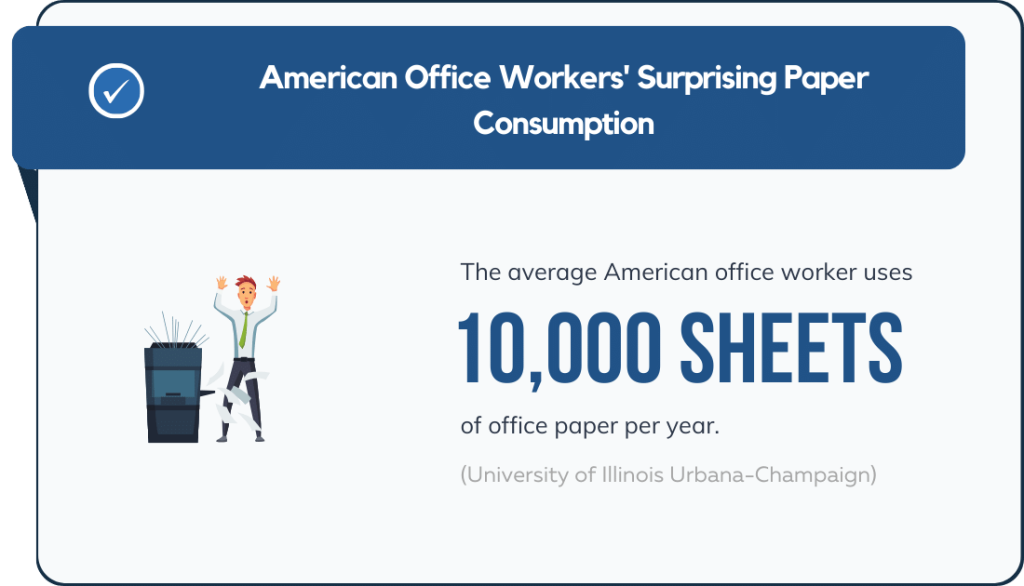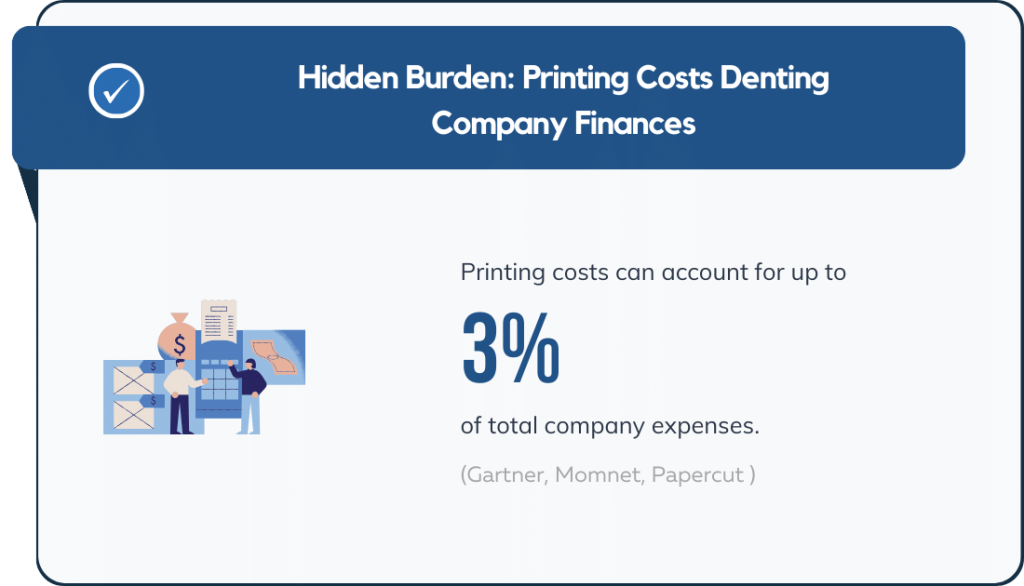The printing industry remains a formidable and evolving force in the global market, showcasing both resilience and adaptability amidst rapid technological changes. In 2022, the industry was valued at a substantial $481.8 billion, underscoring its significant role in the economic landscape. This value is not just a reflection of its current state but also a harbinger of growth, with projections indicating an increase to $596.6 billion by 2030.
This expected growth illustrates the industry’s capacity to integrate innovative technologies and adapt to evolving market demands. The expansion of the printing industry is a testament to its enduring relevance and its ability to stay ahead in a technology-driven world.
For a more comprehensive understanding of this vital sector, I will now share some of the most crucial printing industry statistics. 🖨️💸🌿
Printing Industry Statistics
- This market was valued at $481.8 billion in 2022 and is expected to reach $596.6 billion by 2030.
- The printing sector experienced an average annual decline of 2.3% from 2017 to 2022.
- It is estimated that there are approximately 46,200 printing businesses in the United States.
- As of 2022, the printing industry employs 358,777 people in the United States.
Sources: Gartner, IBIS world, TonerBuzz
Printer Market Share
Hewlett Packard (HP) had a 24.5% share of global printer shipments in March 2021. Canon had a 17.7% share.
Other printer market shares
- Brother: 10.7%
- Epson: 9.9%
- Kyocera: 7.8%
- NEC: 5.6%
- Ricoh: 3.6%
- Lexmark: 3.12%
Office Printing Statistics: The Key Data
- The average American office worker uses 10,000 sheets of office paper per year.
- US offices use 12.1 trillion sheets of paper every year.
- Printing costs can account for up to 3% of total company expenses.
- Printing costs are typically underestimated by 30-40% by businesses.
- The printing habits of the average employee cost a company $725 per year per employee.
- 90% of businesses have no idea how much they spend on printing.
- 23% of help desk calls are printer-related.
- 45% of the paper printed in an office ends up in the trash.
Sources: (University of Illinois Urbana-Champaign, Georgia State University, Gartner, Webinar Care, LinkedIn, Buyer’s Lab, Marconet, Record Nations)
American Office Workers’ Surprising Paper Consumption

Source: University of Illinois Urbana-Champaign
| Insights from Statistics | Brief Explanation |
| High Dependence on Paper | Indicates traditional, paper-intensive work processes. |
| Digital Transformation Opportunity | Suggests potential for increased digital documentation. |
| Resource Management Focus | Highlights the need for efficient paper usage and recycling. |
US Offices’ Staggering Annual Paper Usage Revealed
Source:Georgia State University
| Insights from Statistics | Brief Explanation |
| Massive Paper Consumption | Reflects extensive use of paper in business operations. |
| Sustainability Challenges | Highlights the environmental impact of high paper usage. |
| Shift Towards Digitalization | Emphasizes the need for embracing digital alternatives. |
Hidden Burden: Printing Costs Denting Company Finances

Source:Gartner
| Insights from Statistics | Brief Explanation |
| Significant Printing Expenses | Indicates a major financial outlay in company budgets. |
| Cost Optimization Potential | Suggests opportunities for reducing printing costs. |
| Reassessment of Resources | Implies a need for efficient use of printing resources. |
Underestimated Printing Costs Strain Business Budgets
Source:Webinar Care
| Insights from Statistics | Brief Explanation |
| Common Financial Oversight | Reveals frequent underestimation in budgeting. |
| Need for Accurate Monitoring | Stresses the importance of precise expense tracking. |
| Enhanced Cost Management | Indicates potential for improved financial controls. |
Employee Printing Habits: A Costly Office Trend
Source:LinkedIn
| Insights from Statistics | Brief Explanation |
| Individual Impact on Expenses | Shows significant cost per employee due to printing. |
| Importance of Habit Optimization | Underscores the need to refine individual printing practices. |
| Economic Efficiency | Highlights potential savings through better printing management. |
Widespread Ignorance of Printing Costs in Companies
Source:Buyer’s Lab
| Insights from Statistics | Brief Explanation |
| Widespread Financial Blind Spot | Indicates a common lack of expense tracking in printing. |
| Need for Improved Oversight | Highlights the necessity for better financial monitoring systems. |
| Resource Management Inefficiency | Suggests a broader issue in managing company resources. |
Printer Issues: A Significant Chunk of Help Desk Calls
Source:Marconet
| Insights from Statistics | Brief Explanation |
| Prevalence of Printer Issues | Signifies a high volume of printer-related support needs. |
| IT Resource Allocation | Suggests considerable IT support dedicated to printer problems. |
| Need for Better Management | Indicates a demand for improved printer maintenance strategies. |
Office Printing Inefficiency: Half Wasted
Source:Record Nations
| Insights from Statistics | Brief Explanation |
| High Resource Wastage | Indicates significant inefficiency in paper usage. |
| Need for Conscious Printing | Suggests a necessity for more thoughtful printing practices. |
| Document Management Improvement | Highlights the importance of better document handling. |
IT’s Printing Problem: A Time-Consuming Task
Source:Buyer’s Lab
| Insights from Statistics | Brief Explanation |
| Significant IT Involvement | Shows a considerable portion of IT time dedicated to printing issues. |
| Need for Efficient Solutions | Points to the necessity for more streamlined printing management. |
| Potential for Tech Advancements | Suggests exploring advanced technologies to alleviate IT workload. |
The Financial Might of the Printing Industry
Source:IBIS world
| Insights from Statistics | Brief Explanation |
| Economic Robustness | Indicates the printing industry’s significant market presence. |
| Diverse Sector Impact | Reflects the industry’s importance across multiple sectors. |
| Continued Demand for Services | Suggests enduring reliance on printing despite digitalization. |
Printing Industry’s Gradual Decline Over Five Years
Source:IBIS world
| Insights from Statistics | Brief Explanation |
| Industry Evolution | Demonstrates the shift towards digital alternatives. |
| Adaptation Challenges | Highlights the need for the industry to evolve with technological advancements. |
| Changing Consumer Preferences | Indicates a transformation in how information is consumed. |